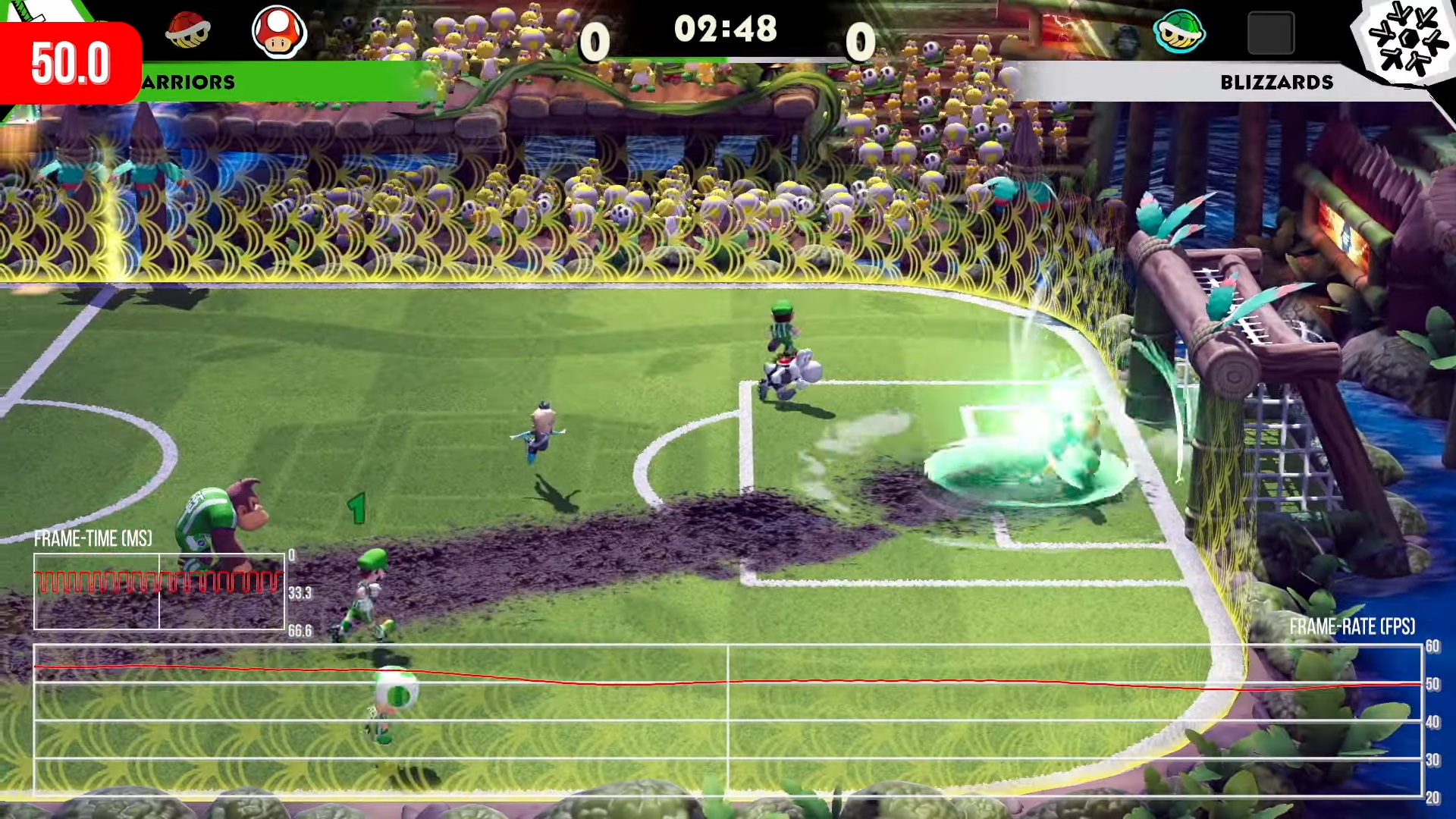These days, Next Level is best known for their work on the Luigi’s Mansion series but they got their start in in the early 2000s with fast-paced, physical sports games: the cross-platform NHL Hitz Pro, then Super Mario Strikers for the Nintendo GameCube. The original Strikers was well received, with a slick 60fps presentation and responsive gameplay. It received a follow-up on Wii two years later but, after that, the series basically went into hibernation until this year. In the meantime, Next Level produced some technically excellent games, particularly 2019’s Lugi’s Mansion 3 - the team’s first release on Switch and one of the platform’s most visually impressive games with super crisp image quality, tremendously moody lighting, impressive reflections, robust physics and great character models - all at a full 1080p. Three years on, and we get Mario Strikers: Battle League. The game builds on the original concept - it’s a five vs five game of football with four characters per side duking it out on the pitch with goalies posted at each end. The scale of the field is reduced compared to a more realistic sim, ensuring that players always have full view of the action while pushing up the pace of each match. Thanks to the Joycon setup, it’s possible to play Battle League locally with up to eight players - which isn’t exactly a common thing, but I love it. Right away, you’ll notice the game runs at a full 1080p in docked mode - anti-aliasing is absent, as is common with Nintendo releases, but it’s still surprisingly sharp and clean for a late generation Switch title targeting a higher frame-rate. That’s impressive for a game with some creative environments, where matches are played in space and the stadiums often consist of two entirely different environments smashed into one to produce attractive results. Battle League also takes advantage of its introductory and event sequences to show off its characters with maximum detail, complete with self-shadowing, highlights playing off their silhouette and post-processing effects such as depth of field used for the background. These sequences also give us a close look at the pitch itself, where a shell texture layer is used to give the illusion of actual grass blades, while Donkey Kong’s fur receives a similar treatment. It’s nothing new but the implementation is excellent. You’ll even notice fully 3D crowds (although updated at half-rate) and that old-school render-to-texture feature on the jumbo-trons mirroring the playfield. While there are no revolutionary techniques in play, there is a real purpose in how these features are used to create a beautiful final image. Compared to the prior Strikers games, I feel as if this new entry is simply more visually attractive with brighter colors and vibrant stadiums. All of this is backed by exceptionally smooth animation work that both brings the characters to life while also injecting them with personality. The game also supports full 5.1 surround, an increasingly uncommon feature in Switch games but one that’s critical for a sports game like this in my view - hearing the roar of the crowd in the rear channels adds a lot to the atmosphere. So in many ways the game is beautiful to behold, but we need to talk about performance - both in-game and in cutscenes. In-game, Strikers targets 60fps and delivers this the vast majority of the time without sacrificing resolution. That means we’re really looking at a proper 1080p60 game on Switch which, like surround sound, isn’t exactly commonplace. This is maintained in both docked and handheld mode, although it’s worth noting that I wasn’t able to test the game on my portable-capture-capable Switch to run the footage through our usual tools. So far, so good then, but cutscenes are a different story. Any time the camera shows close-up shots of characters, including replays and cinematic sequences, the frame-rate is halved to 30fps. This is a logical move that allows for improved rendering quality but unfortunately there’s an issue: the frame pacing is not consistent. As a result, there is more visible judder in these scenes than you’d normally expect. The frame-rate can also actually slip below 30fps at points too, suggesting that these moments are rather heavy on the Switch. Ultimately, it’s not a massive deal as it’s only an issue with the non-interactive sections, but it would be nice to at least see proper frame-pacing sorted out if possible. So despite this one minor failing, Mario Strikers is extremely polished on Switch. It’s the best-looking entry in the series to date, plays like a dream and stands as another great release for Next Level Games who have earned a strong reputation for their technical prowess. The team is going from strength to strength, and it’ll be fascinating to see what they do next.

